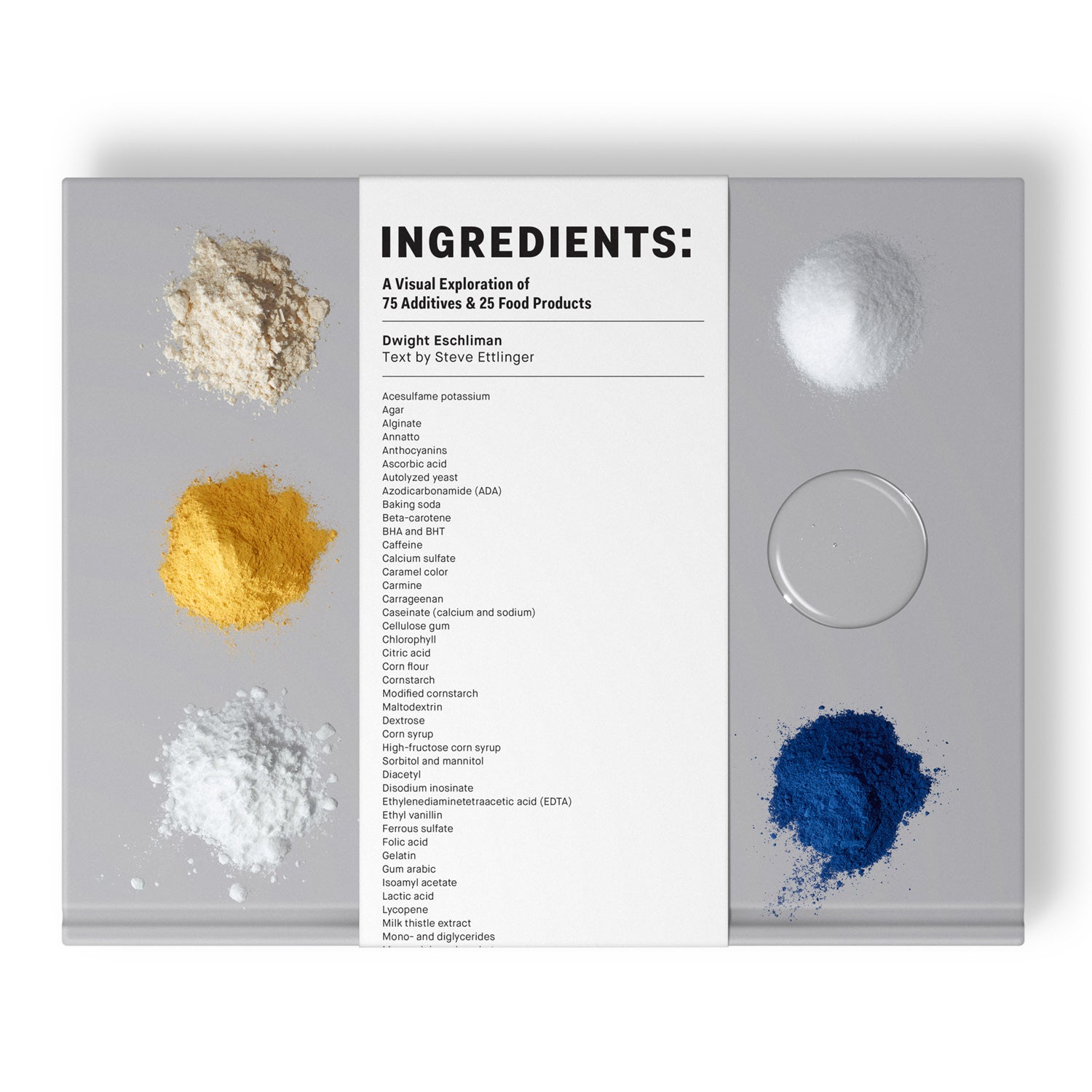ItŌĆÖs the diet advice that springs eternal, if you canŌĆÖt pronounce the ingredient, you probably shouldnŌĆÖt be eating it.╠²
But hereŌĆÖs the problem with the adage:┬Ābacon grease and high fructose corn syrup are both pretty easy to pronounce. Ascorbyl palmitate, may be tough to say, but is actually quite harmless. If anything, the mild preservative gives you an extra vitamin C boost. So while alarmist information on these additives is easy to come by, good informationŌĆöthe kind not written primarily for Facebook sharesŌĆöhas been harder to find. But a new book hopes to explain to Americans exactly what theyŌĆÖre really eating, using pictures.
',' is a photographic dive into the world of white powders and clear liquids. ItŌĆÖs the latest work by photographer (and frequent ║┌┴Ž│į╣Ž═° contributor) .╠²
ŌĆ£The project kind of fell into my lap after we deconstructed the Twinkie,ŌĆØ says Eschliman, of his 2010 project . ŌĆ£That was our first thing that went completely viral. It was everywhere for five seconds. I wanted to dissect an American icon, but I had no idea that IŌĆÖd touch such a nerve.ŌĆØ┬Ā
While the Twinkie concept was an instant hit, the expanded book has been more challenging. The FDA keeps a database of more than 3,000 ingredients permissible food additives, But Eschliman only wanted to include 100 ingredients. To whittle down his list, the photographer came up with specific criteria. Items had to have interesting names, and he wanted to include a mix of the not-so-healthful and the innocuous. ŌĆ£ThereŌĆÖs a perception that all of these are really bad but you never hear the other side. I honestly feel like food science is pretty fascinating,ŌĆØ he says.╠²
Then there was the problem of making 100 ingredientsŌĆömost white powdersŌĆövisually interesting. ŌĆ£I am very familiar with the term ŌĆśviewer fatigue.ŌĆÖ I knew going into this that it was going to be a lot of white powders and clear liquids but even I was surprised by how many white powders and clear liquids there were,ŌĆØ says Eschliman.╠²
To break up the white-on-white-on-more-white problem he focused on textures, grouping items in interesting ways and adding in some supermarket shots. ŌĆ£I knew no one was going to look at 200 pages of white powder.ŌĆØ┬Ā
Alongside each image Eschliman then included information about each additive. The text was written by Steve Ettlinger, who, coincidentally, is the author of his own Twinkie project: '.' His just-the-facts prose lets readers navigate these substances without bias. ┬Ā
Which is why, if youŌĆÖre looking for a diatribe on the dangers of processed food, this book isnŌĆÖt it. ŌĆ£It was really important to me that we took a step back and took an observational approach,ŌĆØ says Eschliman. ŌĆ£Chemo-phobia is one of SteveŌĆÖs favorite words,ŌĆØ he says adding that the goal wasnŌĆÖt to strike Food Babe-style fear into the hearts of Twinkie-eating Americans, but to educate them. ŌĆ£YouŌĆÖll get a good kernel of info about everything in the book.ŌĆØ┬Ā
And yes, some of what you read in 'Ingredients' may make you reconsider your food choices. That didnŌĆÖt happen for Eschliman, ŌĆ£but I already had a healthy fear of a lot of these things.ŌĆØ Still, one thing did make his stomach turnŌĆönot because of its toxic chemical structure of but because of how it smelled. ŌĆ£Diacetyl is this bright yellow liquid and itŌĆÖs extraordinarily smelly,ŌĆØ he says. He knew going into the shoot that the stuff was going to stink, but he had no idea the level of nasty even a small vile could produce: ŌĆ£ItŌĆÖs this full-body experience where itŌĆÖs not even really a smell anymore.ŌĆØ The compound is used to add buttery flavor to food and alcohol.╠²
Luckily the book isnŌĆÖt a scratch-and-sniff. However, it is an incredibly useful and interesting volume for anyone curious about the things they consume.╠²


